Mark Reynier, former fine wine merchant and then co-owner of Scottish whisky distillery, Bruichladdich, wants to shine the light on the Irish whiskey sector like never before with an approach to distilling at Waterford – distributed in the UK through Speciality Brands – that has more in common with premium winemaking.
Waterford Whisky likes to do things differently. In fact it feels like it as much a badge of honour that there is very little it does that complies with the traditional way that whisky is made, marketed and talked about. It’s an Irish whiskey, for example, that insists on not adding the extra “e” and is quite happy to stick with the Scottish spelling for whisky.
Then there are the blue bottles what make it look as much at home on a perfume or health or beauty counter than sitting on a back bar or shelf in a specialist retailer.
But it is how it goes about making its whisky that makes Waterford deserve to be regarded differently.
Its focus is all about celebrating Irish barley and looking to push the boundaries in terms of what distillers know and understand about what impact different types of barley have on a finished whisky. Barley is so much more than a base ingredient in the hands of Waterford founder and chief executive, Mark Reynier, head distiller, Ned Gahan, and their team.
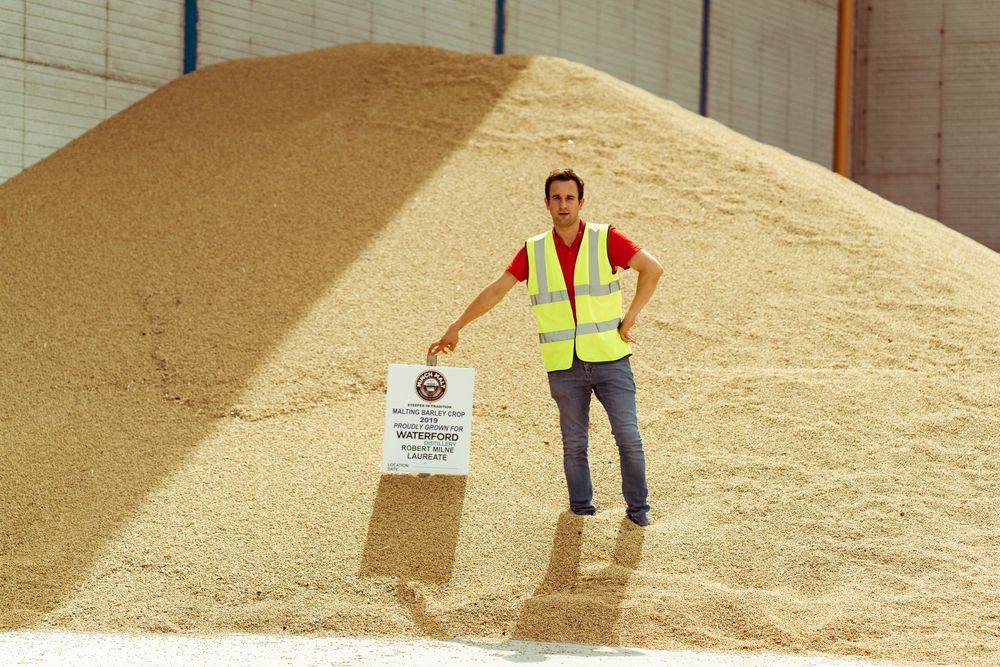
Barley shots are not normally what sells a single malt but in Waterford’s case it is all about the barley – here Dr Max Potterton stands amongst some Minch Malt barley
So much so that it splits and divides every batch of whisky made from a certain barley type so that it can drill down into what makes that barley different and signifiant to another. It is very much the same language and approach that a winemaker would take fermenting different parcels of wine, taken from certain vines in a vineyard, and then placing them in different barrels or tanks to truly identify their individual characteristics and what they can bring to a wine.
Reynier says the whiskeys sum up a career that to date has been wrapped up in Scottish whisky and fine wine. He says: “Waterford is the culmination of this rather unusual journey.”
He has seen first hand the power of terroir in wine, so why can’t it be as influential in whisky. It was an approach that he had first looked at with Bruichladdich, but it is at Waterford where he feels he has the freedom – and access to local, premium barley to really prove the terroir connection.
It’s all about the barley
He is also quite happy poking the rest of the whisky (or whiskey) industry in the ribs about it.
“For years folk have been hoodwinked on where whisky’s quality truly lies – once stills, then water, now wood,” he says. “We want to shine the light on what really makes malt whisky the most complex spirit in the world, the primary source of all that extraordinary flavour: barley.”
In fact he has shone the light so much on barley he could probably write a PHD on the subject. Ably assisted by his head distiller, Ned Gahan.
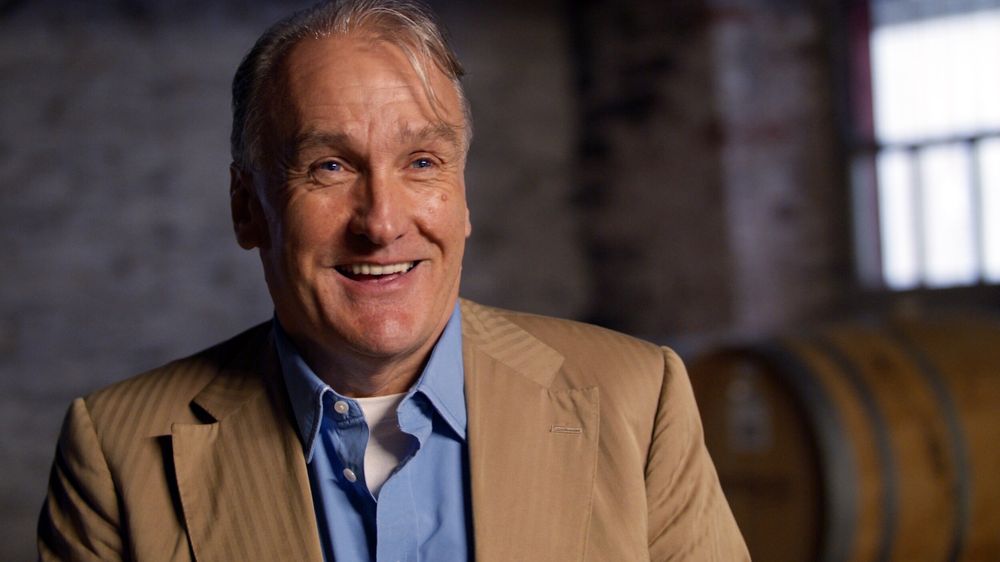
Mark Reynier’s background in wine has given him a unique approach when crafting the finest whiskies
Since taking over Waterford in 2014 Reynier and his team have identified 97 Irish farms from which they source their barley. Each for a different reason, be it organic, or biodynamic, or one of the distinct 19 soil types it selects for its whiskies. Each barley is then harvested, stored, malted and distilled separately.
As Waterford’s website explains: “We can capture in spirit each farm’s terroir, that subtle character shaped by micro-climate and soil. Individuality and integrity from field to barrel. We only distill one farm at a time so check back to see who’s passing through each week.”
Reynier’s wine influence can also be seen in the huge investment Waterford makes in the barrels and casks it uses. Around 30% of its annual revenue goes on just buying cars, claims Gahan, where only the best American or French barrels will do.
Uber provenance
It’s an approach they admit is “not for everyone” but if it is to succeed in creating “one of the world’s most unique, complex and profound whisky,” then having “uber-provenance” behindwhiskies they make is all part of the story.
Which is very much encapsulated in the Single Farm Origin series that “explores Irish terroir one farm, once place, at a time”. The kind of line you might expect Bono to come up with. In fact, there is a U2 connection to Waterford…but more of that later.
Gahan says it is driven by wanting to highlight every expression a different barley – or Irish farmer – can help create. It is not all up to him to how a particular whisky might taste. That’s determined by how the barley is grown and the individual influence of the farmer and grower behind it.
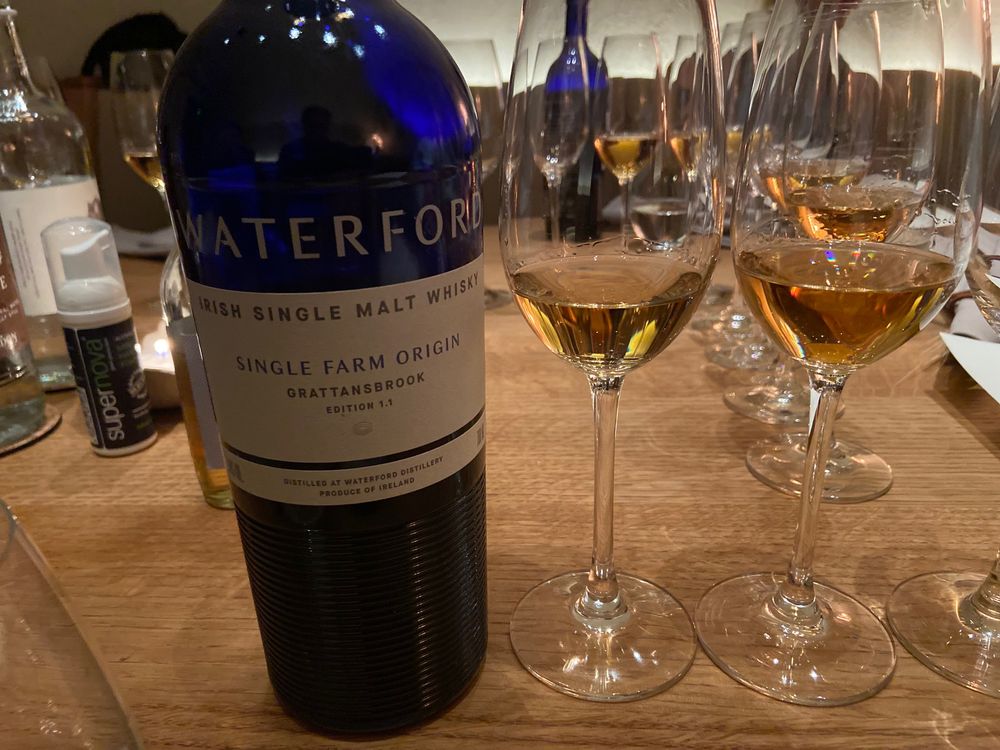
Waterford work so closely with their barley growers that they make them the heroes on their labels
Which is why it is their names that appear on the labels. The distillery team’s job is to reflect that place and its unique terroir in the whisky it makes. “Each batch of whisky is created to maximise the unique flavours of the underlying barley and all of its provenance,” is how the website puts it.
It is coming up to seven years since Mark Reynier swapped the thrills and spills of the Scottish whisky industry to travel to Ireland and create the Waterford distillery out of the ashes of what had been one of Diageo’s key production centres in the country – more famous for producing Guinness than any amber whiskey nectars.
It has also taken seven years for Reynier and his team to bring Waterford’s first commercial whiskies to market with the launch earlier this summer of its The Single Farm Origin Serie, through Speciality Brands. The three whiskeys include: Bannow Island: Edition 1.1, Ballykilcavan: Edition 1.1, and Ratheadon: Edition 1.1, each priced around £70.
Ed Harpur is the barley farmer celebrated for helping to make Bannow Island: Edition 1.1 from barley grown on southern coast of County Wexford where it is all about “salt-laden” Atlantic winds and the influence they bring to the soils and type of barley that can be grown.
The Ballykilcavan: Edition 1.1. was distilled from barley grown by David Walsh-Kemmis west of the Barrows in County Laois. But with only 8,000 bottles made of all three, of which around 1,500 allocated for the UK market, they won’t be around for long.
The Cuvée range
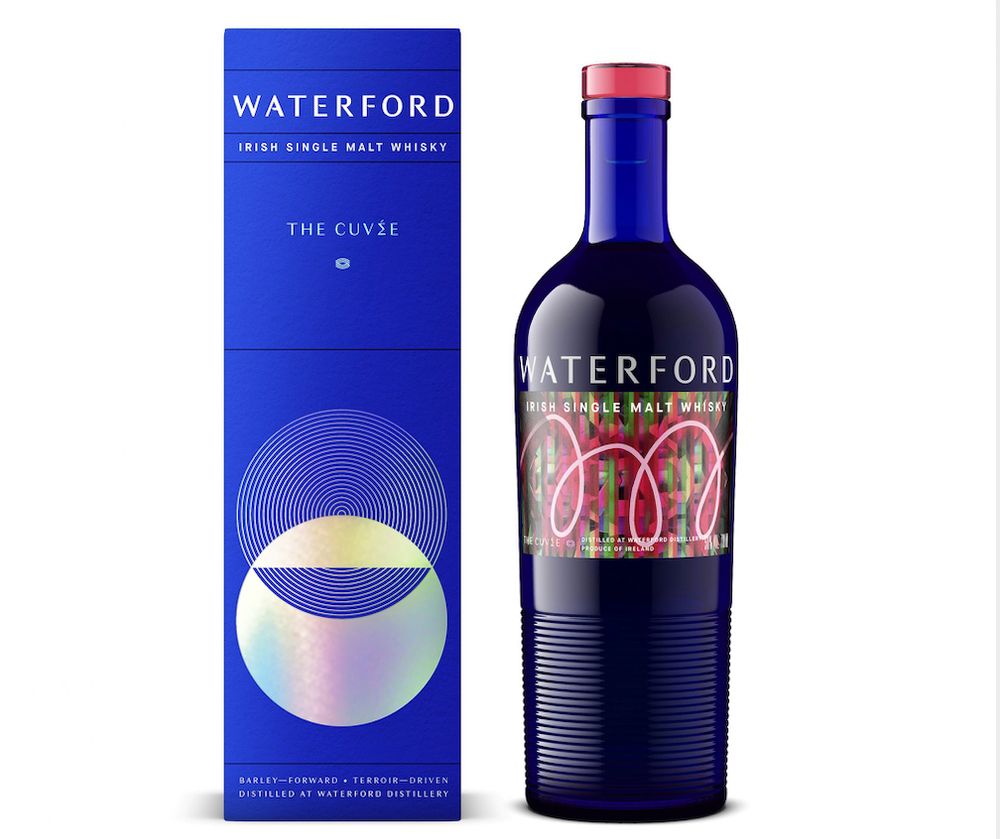
Waterford’s Cuvee style reflects the best of what the distillery can do from blending all its best barleys
Keeping with the wine theme Waterford also has its Cuvée range, which is what Gahan describes as its “Grand Cru” styles where you able to highlight and celebrate the best blends of barleys from individual growers. Here it is all about depth, texture and length and a flavour profile that goes on and on. First in the range – aptly named 1st Cuvee Pilgrimage – was released early last year with only 1,000 bottles.
The idea for its Cuvée whiskies is for each one to be unique, with no set style between them. The unifying factor being the fact they are a blend of barleys and soil types and have an overall light, elegant touch to them, says Gahan. For Cuvée Gahan has worked with 25 individually distilled Single Farm Origins whiskies each bringing its own identity to the final whisky.
As Reynier says: “Coming from a wine background I’ve always been intrigued by how the greatest Bordeaux wines were made. Rather than generically bundling up their grapes in to a single wine they went to the effort of making several individual wines instead, each expressing a terroir-derived personality of its own. Only after months of maturation are these component wines assembled to make a single profound wine of greater complexity, the Grand Vin. Why not with whisky? This is the vision seven years in the making, the essence of the Waterford project.
“Single Farm Origin whiskies, each one defined by its own Irish-grown barley, each one distinctly different – all of them Waterford single malts – come together for the first time. Here the whole is even more than simply the sum of its parts: the result is our vision of how to create the most complex and profound single malt possible.”
It’s also where the U2 connection comes in as Waterford wants to work with a different contemporary artist to help create the labels for the next Cuvée edition and has recently worked with visual artist Leah Hewson, who is Bono’s niece.
It’s all about the Téireoir
Each bottle of Waterford whisky has its own unique Téireoir code that its owner can take to the Waterford website, key it in and then gain access to a fascinating world of insights, reports, data, maps, GPS tracking details, for the particular type of barley that went into making that unique bottle. For whisky nerds it’s a dream come true.
Crucially much of the information is about the farmer, their land and their story. It is all the combined stories of the farmers that make the barley that all build up to give Waterford its own identity and personality, says Gahan. You can even listen to audio tapes of the wind rushing through barley fields and the birds singing above. Puts those DVD extras to shame.
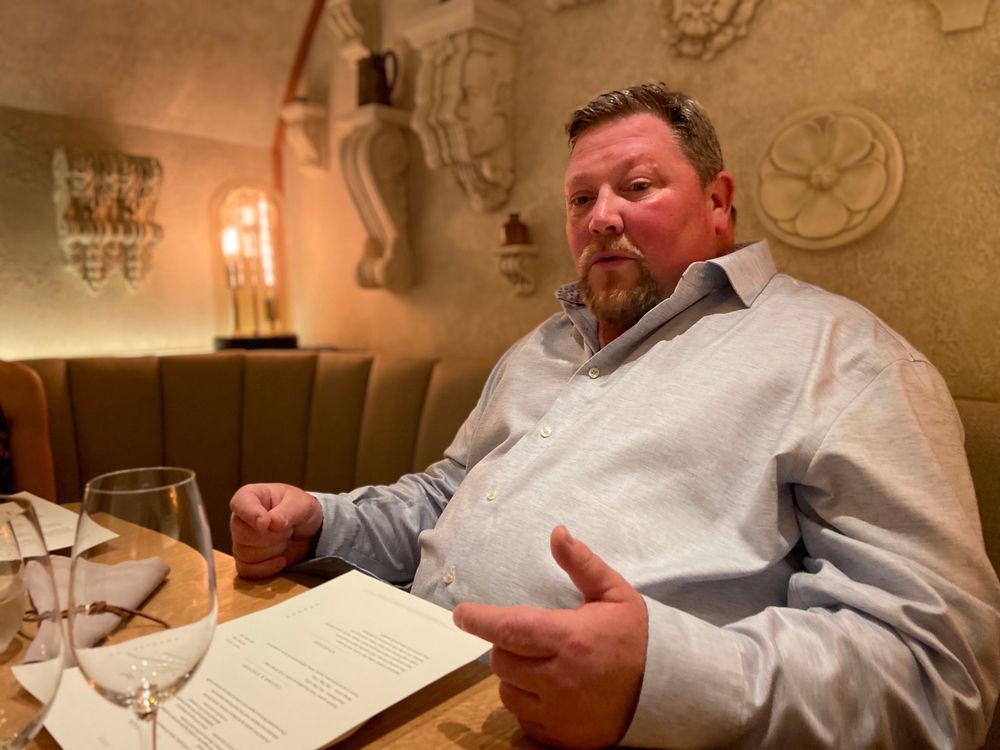
Ned Gahan talksthrough Waterford’s unique approach at a dinner in London this summer
“We want to create a community for our whiskies, a cult following if you like,” says Gahan. It seems to be working with online forums of Waterford fans passing notes and ideas between them. “They even try and guess the code for our next bottling,” adds Gahan.
Even the bottle is not spared Waterford’s obsession with detail. Examine it closely and you will see it has 24 tiny ridges, with each one there to represent an hour in the 24 hour cycle of farmers tending to their land.
Such an obsession on its barley also comes down to where Waterford is based – in south east Ireland – and widely regarded in barley circles as the place to go for quality level barley.
“Waterford is also about flavour,” stresses Gahan, and the best barley also gives the longest, deepest notes and textures of flavour you can get in a whisky, he adds. When it comes to flavour he will always look at what a biodynamic barley can produce, for whatever good it is doing to the soil, also has an impact on its flavour too, he says.
He admits they are also only at the beginning of the journey and it will take many years to truly understand what differences and characteristics different types of barley have. “We want to create the most flavoursome whiskies you can find.”
Learning the ropes
Gahan talks about barley and its terroir as if he was born in a field of it, but he is clearly a quick learner for he admits he did not even know much about distilling when Reynier first offered him an opportunity to work at Waterford, where he had previously been employed by Diageo, largely to brew Guinness.
He says he admits he was surprised to be even considered by Reynier for the head distiller role, but having met him could see why he wanted someone with “a fresh pair of eyes” to come in and help him take what is such a different approach to making whisky. A task that might have been been much harder if you had a traditional whisky distiller calling the shots.
“I am still learning every day on the job mind,” he says.
It’s his passion and natural enthusiasm for the whiskies that really shine through. Reynier may have the vision for Waterford, but it is Gahan, backed and supported by the family of barley farmers that make it happen.
- The Waterford range is distributed in the UK through Speciality Brands, a suppler partner of The Buyer.
- You can read more about Waterford on its website here.































